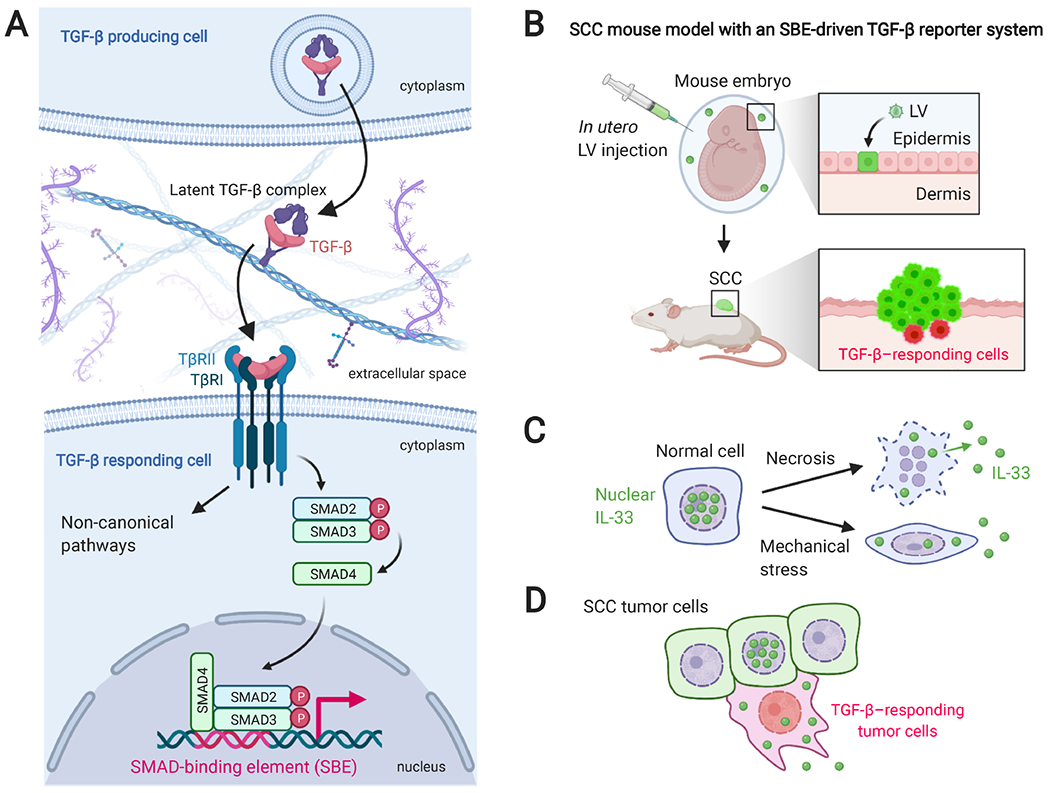Figure 3.

The TGF-β signaling pathway, SCC mouse model, and models of IL-33 extracellular release. (A) A summary of the TGF-β signaling pathway. TGF-β is translated as larger polypeptides and proteolytically cleaved in TGF-β-producing cells. After secretion, TGF-β is sequestered in the ECM as a latent complex. The release of TGF-β ligand is regulated by diverse mechanisms, including protease-mediated cleavage of latent associated protein (LAP), low pH, reactive oxygen species, and conformational changes of LAP by Arg-Gly-Asp (RGD)-binding integrins [69]. TGF-β binds and brings together two transmembrane serine–threonine kinases, TGF-β receptor I (TβRI) and II (TβRII). The receptor complex propagates the signal by phosphorylating intracellular substrates. The canonical downstream effectors are SMAD2 and SMAD3. Phosphorylated SMAD2/3 can complex with SMAD4, translocate to the nucleus, and form an active transcription factor by binding to the specific DNA sequence called SMAD-binding elements (SBEs). Additionally, TGF-β activates SMAD-independent, non-canonical pathways, including PI3K/Akt, MAPK (ERK, JNK, and p38), and Rho/Rho kinase pathways. (B) Schematic illustration of epidermis-specific lentiviral transduction and HRAS-driven SCC mouse model. Lentiviral vectors (LVs) are injected into the amniotic fluid surrounding the TetO-Hras, Rosa-YFP transgenic mouse embryo to transduce the epidermal progenitor cells. Postnatally, doxycycline administration induces HRAS-driven SCC (green), in which TGF-β-responding tumor cells are detected by the reporter protein expression (red). (C) Regulation of the extracellular release of IL-33. After necrotic cell death, full-length IL-33 is released from the nuclei of IL-33-producing cells. Additionally, a cell death-independent, mechanical stress-induced release of IL-33 has been reported [70]. (D) Our group found that NRF2Hi, TGF-β-responding tumor cells in invasive SCC show cytoplasmic translocation of IL-33, which was correlated with the accumulation of FcεRIα+ and the IL-33 receptor ST2+ macrophages in the stroma.
